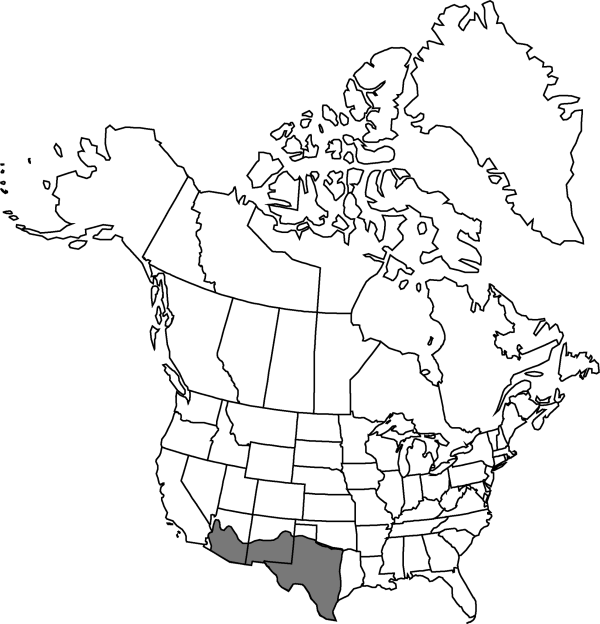Cylindropuntia leptocaulis
in C. Backeberg and F. M. Knuth, Kaktus-ABC, 122. 1935.
Shrubs or small trees, sparingly to densely branched, 0.5–1.8 m, usually bearing similar, commonly spineless terminal branchlets arranged at right angles along major axes. Stem segments usually alternate, gray-green or purplish, 2–8 × 0.3–0.5 cm; tubercles linear, drying as elongate, riblike wrinkles, 1.1–2 (–3) cm; areoles broadly elliptic, (1–) 1.5–3.5 × 0.7–2 mm; wool white to yellow, aging gray. Spines 0–1 (–3) per areole, usually in apical areoles to well distributed, erect, flexible, straight or arching upward or downward, redbrown with gray to whitish coat, tips yellow, aging redbrown, terete, angular-flattened basally, the longest (4–) 14–45 mm; sheaths gray to purple-gray with yellow to redbrown tips or yellow throughout. Glochids in adaxial tuft or crescent to encircling areole, yellow or reddish-brown, 1–3 (–5) mm. Flowers: inner tepals pale-yellow to greenish yellow, sometimes tipped red, narrowly obovate, 5–8 mm, acute, apiculate; filaments greenish yellow; anthers yellow; style yellow; stigma lobes greenish yellow. Fruits occasionally proliferating, yellow to scarlet (rarely green, sometimes tinged purple, becoming yellow), sometimes stipitate, obovoid, 9–15 (–27) × 6–7 (–12) mm, fleshy, smooth, spineless; umbilicus 2–4 mm deep; areoles 16–20. Seeds pale-yellow, suborbicular to squarish and crenate in outline, warped, 3–4.5 mm diam., sides smooth, each with 1–3 large depressions; girdle smooth or with very narrow ridge. 2n = 22, 33, 44.
Phenology: Flowering spring–early summer, sometimes fall (Mar–Aug, Oct).
Habitat: Deserts, grasslands, chaparrals, oak-juniper woodlands, flats, bajadas and slopes, sandy, loamy to gravelly substrates
Elevation: 40-1500 m
Distribution

Ariz., N.Mex., Okla., Tex., Mexico (Chihuahua), Mexico (Coahuila), Mexico (Durango), Mexico (Nuevo León), Mexico (Sonora), Mexico (Tamaulipas), Mexico (Zacatecas)
Discussion
Cylindropuntia leptocaulis forms hybrids with C. acanthocarpa var. major (see 3. C. ×tetracantha), C. arbuscula, C. fulgida, C. kleiniae, C. spinosior, C. versicolor (see discussion under C. ×tetracantha), and C. whipplei. Hybrids in central Arizona have flowers intermediate in size to the parents, narrow tuberculate stems bearing 0–1(–2) major spines per areole, and tuberculate, spineless, orange to red fruits. The chromosome number reported for hybrids is 2n = 22.
Selected References
None.
